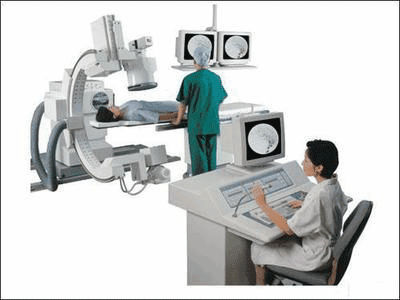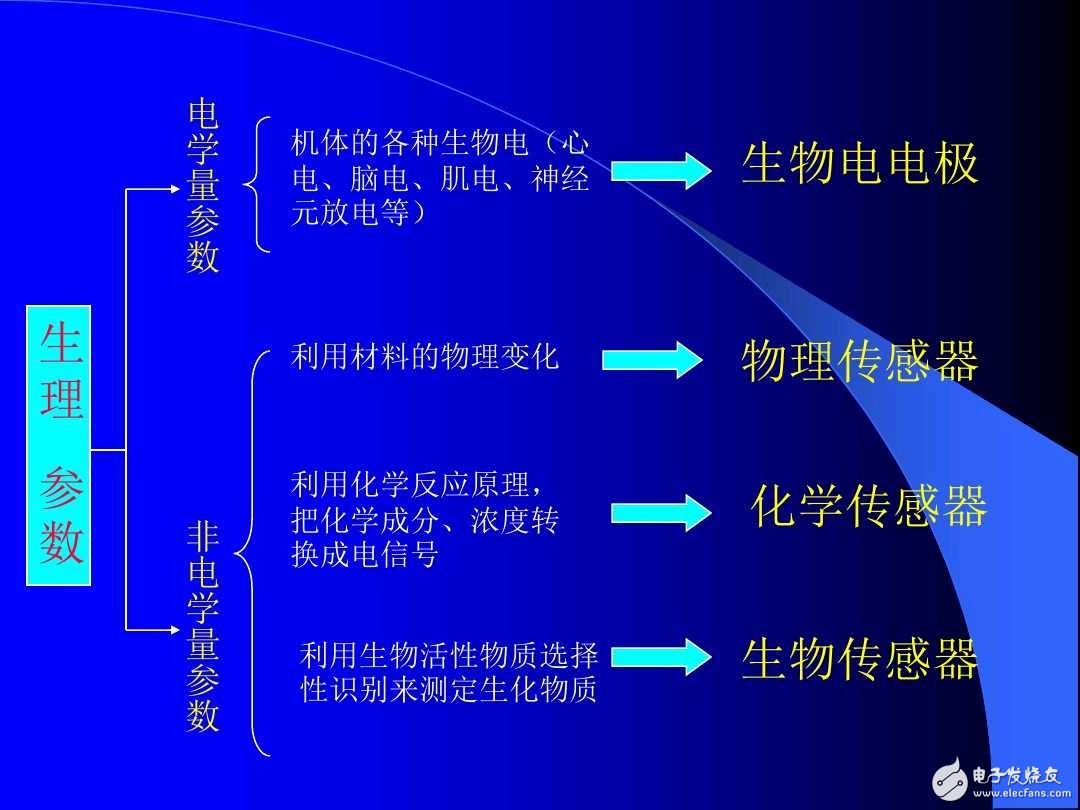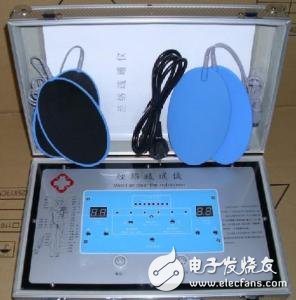A kind of medical sensor used to sense various kinds of biological information and convert it into an easy-to-handle electrical signal device plays an important role in the development of medical instruments and medical experiments. As can be seen from the block diagram of the medical measurement system shown in the figure below, it is the first link of medical measuring instruments, and it is a link between medical instruments and the human body, and it is also a key link. If there is no medical sensor to measure the original parameters accurately and reliably, then the subsequent steps will not get the correct results. In addition, medical sensors provide specific information for medical diagnostic instruments, which often determine the measurement principle and structural design of medical instruments.

Medical measurement system block diagram

(1) Provide diagnostic information: such as heart sound, blood pressure, pulse, blood flow, respiration, body temperature, etc., for clinical diagnosis and medical research.
(2) Monitoring: Continuously measure some parameters for a long time, monitor whether these parameters are within the specified range, in order to understand the recovery process of the patient, and promptly report the alarm when an abnormality occurs. A patient after a heart surgery needs to monitor changes in body temperature, pulse, arterial pressure, venous pressure, respiration, and electrocardiogram.
(3) Human body control: The physiological process of the human body is controlled by the detected physiological parameters. For example, an automatic respirator uses a sensor to detect a patient's breathing signal to control the movement of the respirator, so that the person is synchronized with the human body's breathing; and, for example, an electronic prosthesis uses the measured electromyographic signal to control the movement of the human prosthesis; Blood flow blood pressure control, etc.
(4) Clinical examination: In addition to collecting information directly from the human body, clinical information is often obtained from various body fluids (blood, urine, saliva, etc.) samples. This type of information is called biochemical test information. It is obtained using chemical sensors and biosensors and is essential for the diagnosis of various diseases.
Classification of medical sensorsAccording to the working principle:

(1) physical sensor
Sensors made using physical and physical effects are called physical sensors. According to the current domestic marking method for sensor symbols, two classification methods are introduced here. One is classified according to the working principle, and the other is classified according to the detected quantity. From the working principle, there are: strain sensor, capacitive sensor, inductive sensor, piezoelectric sensor, magnetoelectric sensor, thermoelectric sensor and photoelectric sensor. From the detected amount, there are displacement sensors, pressure sensors, vibration sensors, flow sensors, temperature sensors, and the like. Since a detected quantity can often use several working principles, such as strain gauge pressure sensors, piezoresistive sensors, and piezoelectric sensors. At present, the domestic logo sensor uses uppercase Chinese pinyin letters and Arabic numerals as the logo code. The sensor mark consists of the following four parts: main name, measured, principle, serial number. For example, CWY-WL-10 is an eddy current displacement sensor with serial number 10; CY-YZ-2A is a piezoresistive pressure sensor with serial number 2A.
(2) Chemical sensor
Chemical sensors are devices that convert certain chemical components, concentrations, etc. in the human body into electrical quantities that have a definite relationship with them, and have been greatly developed in recent years. Most of them use some functional membranes to select the specific components to screen the measured components, and then use electrochemical devices to turn them into electrical quantities. Generally, it is classified according to the response mechanism of the membrane electrode, the composition of the membrane and the structure of the membrane, and is divided into an ion selective electrode, a gas sensing electrode, a humidity sensing electrode, a coating electrode, a polymer matrix electrode, an ion sensitive field effect transistor, Ion selective microelectrodes, ion selective electrode sheets, and the like. At present, various chemical components have been successfully used to measure certain chemical components in the human body, such as ion, selective electrode for measuring potassium, sodium, chlorine, calcium and the like; and gas sensing electrodes for measuring oxygen partial pressure and carbon dioxide partial pressure. Gas sensing and humidity sensors using semiconductor ceramics are also widely used.
(3) Biosensor
It is a new type of sensor that has emerged in recent years. It is a sensor made by the ability of certain bioactive substances to selectively recognize biochemicals to be tested. It is an immobilized biological component (enzyme, antigen, antibody, hormone) or organism itself (tissue , cells, organelles) sensors that act as sensitive components. According to the sensitive substances used, it is divided into enzyme sensors, immunosensors, microbial sensors, tissue sensors and cell sensors. Biosensors can be further classified into electrochemical biosensors, semiconductor biosensors, calorimetric biosensors, photometric biosensors, and sound-sensing sensors, depending on the signal converter used. In order to more clearly reflect the sensor's sensitive characteristics and conversion structure, the above two classification methods are often used in practice. For example, the enzyme sensor is further divided into an enzyme electrode, an enzyme temperature sensor, an enzyme FET, an enzyme photopole, and the like.
(4) Bioelectric electrode sensor
Various bioelectricity of the body (electrocardiogram, brain electricity, myoelectricity, neuron discharge, etc.).

Differentiate according to the type of detection
Shift sensor, flow sensor, temperature sensor, speed sensor, pressure sensor, etc.
For pressure sensors, there are metal strain gauge pressure sensors, semiconductor pressure sensors, capacitive pressure sensors, and the like that can detect pressure.
For temperature sensors, all sensors that detect temperature, such as thermistors, thermocouples, and pn junction temperature sensors.
Classify sensors based on human sensory senses that sensors can replace
For example:
Vision sensors include a variety of optical sensors and other sensors that can replace visual functions;
The hearing sensor includes various pick-ups, piezoelectric sensors, capacitive sensors, and other sensors capable of replacing the auditory function;
The olfactory sensor includes a variety of gas-sensitive sensors and sensors that can be used to replace olfactory functions.
This classification method is conducive to the development of bionic sensors. In addition to the widely listed common sensor classification methods, there are various advantages and limitations depending on the sensor material, sensor structure, energy conversion fraction and other classification methods.
Managed POE Industrial Switches
The POE switch port supports an output power of 15.4W or 30W, in line with the IEEE802.3af/802.3at standard, and supplies power to standard POE terminal equipment through network cable power supply, eliminating the need for additional power wiring. In line with IEEE802.3at POE switch, the port output power can reach 30W, and the power available to the powered device is 25.4W. In layman's terms, a POE switch is a switch that supports network cable power supply. It can not only realize the data transmission function of ordinary switches, but also at the same time. Supply power to the network terminal.
POE (Power Over Ethernet) refers to the use of IP-based terminals (such as IP phones, wireless LAN access points AP, network cameras) without any changes to the existing Ethernet Cat.5 cabling infrastructure. Etc.) While transmitting data signals, it can also provide DC power supply technology for such devices. POE technology can ensure the normal operation of the existing network while ensuring the safety of the existing structured cabling, minimizing costs.
POE is also known as a local area network-based power supply system (POL, Power over LAN) or Active Ethernet (Active Ethernet), sometimes also referred to as Power over Ethernet for short. This is the use of existing standard Ethernet transmission cables to transmit data and data at the same time. The latest standard specification of electric power, and maintains compatibility with existing Ethernet systems and users. The IEEE 802.3af standard is a new standard based on the POE of the Ethernet power supply system. It adds related standards for direct power supply through the network cable on the basis of IEEE 802.3. It is an extension of the existing Ethernet standard and the first international standard for power distribution. standard.
Poe Ethernet Switch,2 Port Network Switch,Managed Poe Industrial Switches,Industrial Poe Ethernet Switch
Shenzhen Scodeno Technology Co.,Ltd , https://www.scodenonet.com